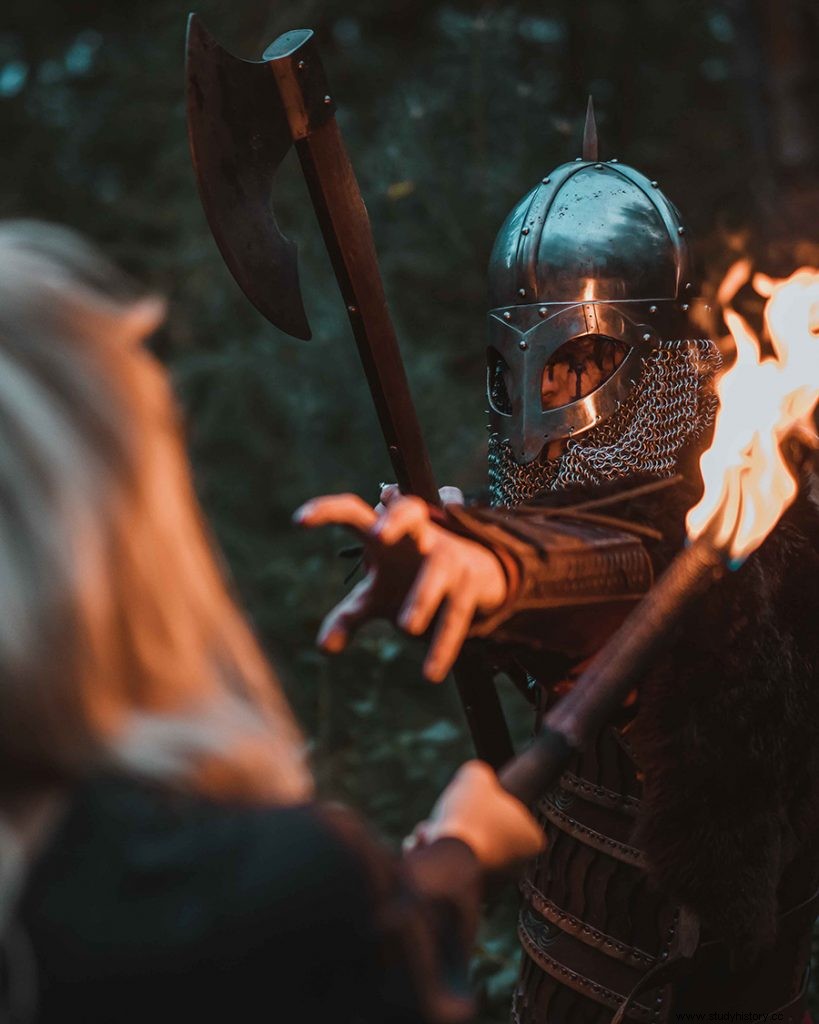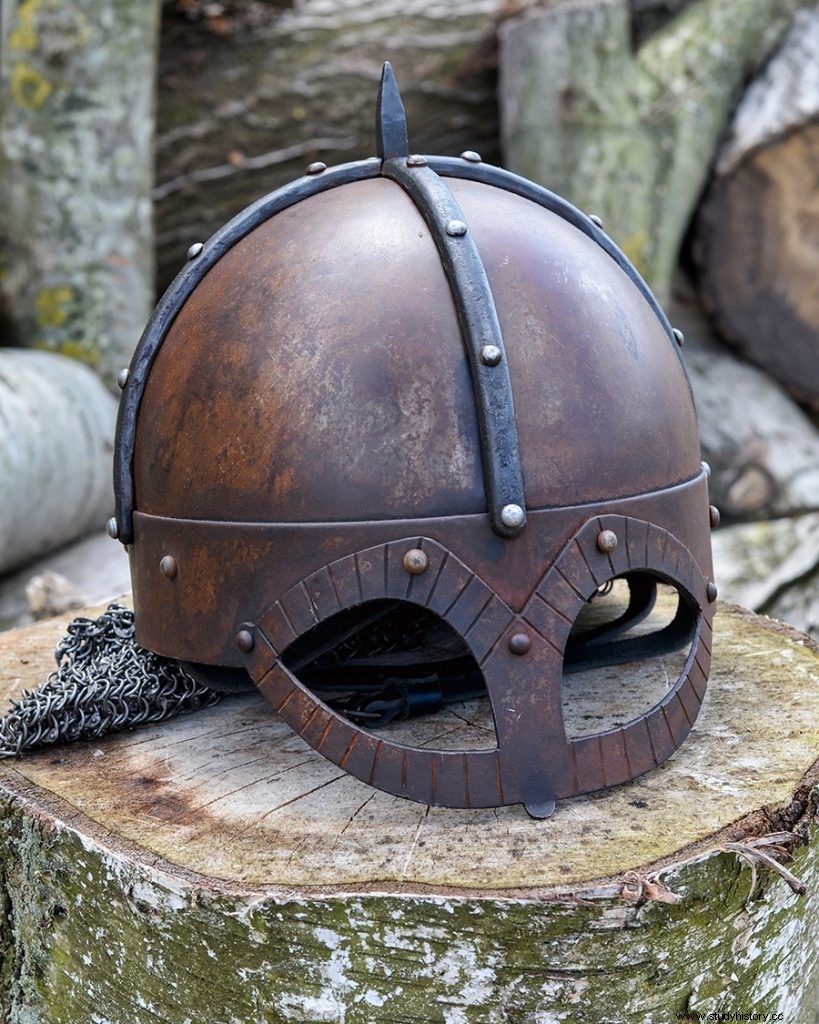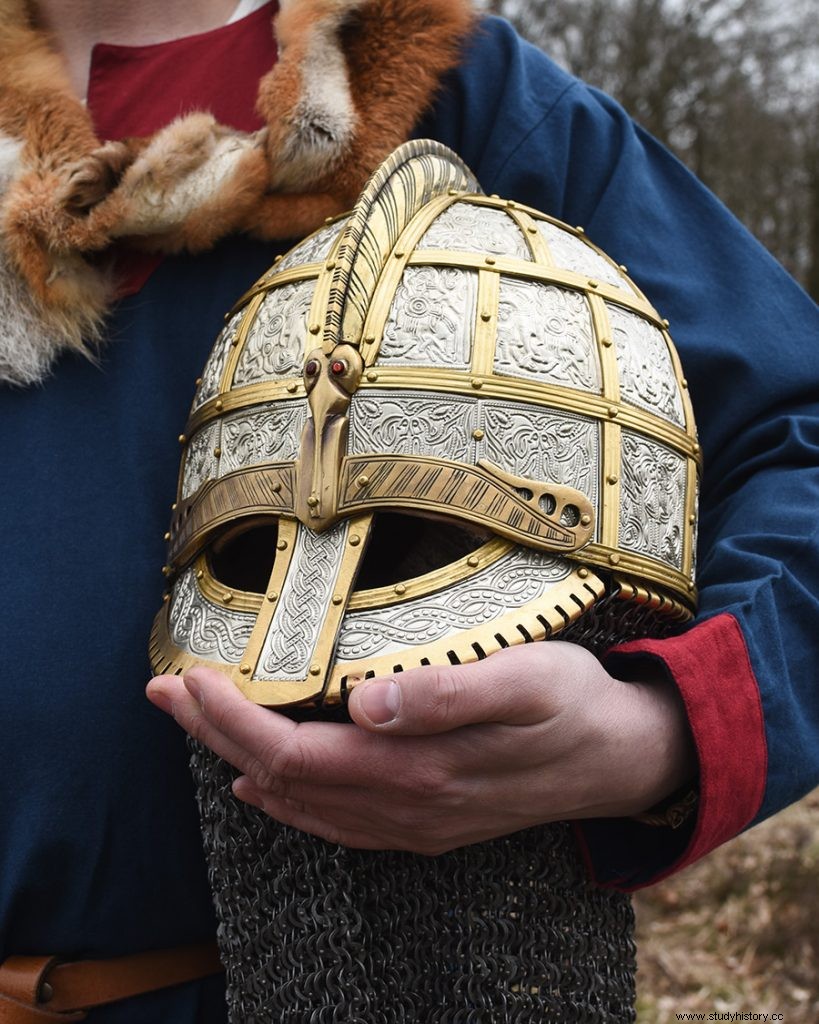Real Vikings wear helmets. But what do these look like? do they have horns All sorts of legends are entwined around the Viking helmets. Here we would like to go into more detail about the goggle helmet. It is also known as Vendelhelm or Nordic comb helmet. A total of around 30 of these helmets have survived to this day.
What are goggle helmets and where do they come from?
The goggle helmet – also known as the Vendel helmet – dates back to the Vendel period, an era in Swedish history between the years 550 and 800. This era owes its name to the Vendel region in Uppsala province. The Vendel period preceded the Viking period, so it would be wrong to speak of Viking helmets in this context. The forerunner of the Vendelhelm is the Spangenhelm, which was widespread in large parts of Europe.
What are the special features of the goggle helmet?
The goggle helmet is similar in construction to the crested helmet of late antiquity. It has a basic structure consisting of three iron bands riveted together. The iron bands run across the forehead and crown of the head and from ear to ear. They are fitted with a face shield, cheekpieces and an aventail made of chainmail. The crest and the eyebow fittings, which are often decorated with animal heads, are typical of the spectacle helmet.



Famous Vendel Helms
Today, around 30 spectacle helmets are known to have come from archaeological sites in Scandinavia and England. The helmets from the boat graves in the Swedish province of Uppland are best preserved. So-called ship or boat graves are graves that consist of a watercraft and are usually located inside a burial mound. Probably the most famous goggle helmet comes from the tomb of Sutton Hoo. The ship grave in the county of Suffolk is interpreted by archaeologists as the resting place of King Raedwald. Sutton Hoo's helm is made of bronze, iron and gold.
Goggle helmet or Viking helmet - what's the difference?
Since the Viking Age follows the Vendel Period, Viking helmets are a somewhat more recent invention. One of the oldest and most well-known finds from the Viking Age is the Gjermundu helmet from Norway. This is said to have been made around the year 900 and has many elements of the classic goggle helmet of the Vendel period. Just like its predecessors, the Gjermundu helmet consists of three iron bands. Although no well could be found during the archaeological excavations, it is nevertheless assumed that it must have existed at a certain point in time.
What we commonly refer to today as a Viking helmet is actually a ventel helmet. However, the boundaries are fluid - this is primarily due to the fact that the history of the Vikings and their predecessors is only known in fragments. For the most part, one can only guess what the helmets of the Viking Age actually looked like. Researchers are still arguing whether fountains actually existed in the generally known form or whether the depictions of the Middle Ages are merely stylized representations.
And what about the horns?
Vikings are said to have worn helmets with horns - at least that's what the modern imagination wants it to be. But this is not true, because the horned helmet is a relatively new invention that goes back to the composer Richard Wagner. The horned helmet first appeared in the second half of the 19th century in Wagner's opera cycle "Der Ring des Nibelungen". Wagner wanted unusual costumes for his hour-long operas:the horned helmets looked very effective on stage. However, the myth of the heard helmet could refer to the helmets of the Northern Irish Bronze Age and Ancient Egypt, but this helmet shape has nothing to do with the Vikings.
